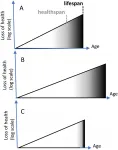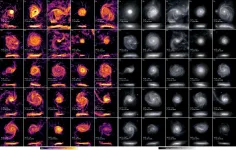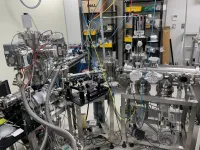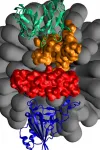An innovative and non-destructive strategy to analyse material from Mars
The IBeA research group of the University of the Basque Country has proposed a method that can be used to characterise samples from the Mars Sample Return mission
2021-02-03
(Press-News.org) The IBeA research group from the University of the Basque Country's Department of Analytical Chemistry, Faculty of Science and Technology, is participating in NASA's Mars2020 space mission, which is scheduled to touch down on Mars in February this year. Specifically, the group has participated in constructing and verifying the chemical homogeneity of the templates included on the calibration card of the SuperCam instrument mounted on the Perseverance. 'We made a set of pads perfectly characterised in accordance the instruments we have here, in order to enable us to verify that the LIBS and Raman spectroscopy measurements taken by the SuperCam are correct,' explains Doctor Cristina García-Florentino. 'Raman spectroscopy is a technique for determining the molecular composition of unknown samples,' she continues. 'In other words, not only can we determine, for example, whether the sample contains calcium or iron, etc., we can also identify the molecular form in which they are present. Thus, we can see whether they contain calcite or gypsum, for example. We can determine the geochemical composition of the planet'.
At the same time, the research group is also working on characterising meteorites, with a twofold objective: 'Firstly, to get ready for the information that may be sent from Mars by the Perseverance rover; and secondly, to develop non-destructive analytical strategies for characterising Martian samples from the return mission (Mars Sample Return mission) when it reaches Earth'. To date, Martian meteorites have been the only Martian samples available for developing different analysis methods. In a recent study, the group has proposed an innovative non-destructive analytical strategy that could be added to the current arsenal of fast analysis techniques which can be used with future samples.
To demonstrate its capabilities, the group has used their analytical proposal to 'characterise the Martian meteorite Dar al Gani 735, with the aim of identifying the terrestrial and non-terrestrial alterations suffered by it, as a very valuable complementary methodology to the more traditional petrographic analyses,' explains Dr García-Florentino.
Access may be uncertain
In the researcher's opinion, 'this study demonstrates the potential of Raman spectroscopy as a key technique in the new upcoming explorations of Mars materials by the Rosalind Franklin rover (the ESA's Exomars2022 mission) and the Perseverance rover (NASA's Mars2020 mission), on which Raman spectrometers will be mounted for the first time in an extra-terrestrial research mission in the field'. According to Dr García-Florentino, the technique is important 'because, once we have samples brought back directly from Mars, we cannot destroy them to analyse them in the initial stages of study. It is therefore important to be ready for when the Martian samples arrive, in order to gain as much information from them as possible, with the fewest possible errors and trying to destroy them as little as possible'.
Nevertheless, the researcher warns that access to the information and to the samples themselves will be difficult: 'We still do not know whether we will be granted access to the samples, whether they will allow us to analyse them as we propose here with the techniques we have developed'. Meanwhile, the IBeA group will continue its work, 'because each meteorite is a world unto itself; each meteorite is totally different from all others'.
INFORMATION:
[Attachments] See images for this press release:
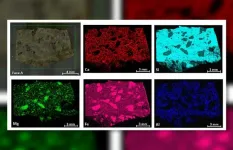
ELSE PRESS RELEASES FROM THIS DATE:
2021-02-03
The COVID-19 pandemic has had a profound effect on higher education -- shifting classes online, canceling events, and putting financial strain on institutions.
One area of academia that has actually shown positive increases, however, is the submission of research papers. A study conducted by Michelle Bell, Mary E. Pinchot Professor of Environmental Health at the Yale School of the Environment (YSE), and postdoctoral associate Kelvin C. Fong found the rate of manuscript submission to a major peer-reviewed journal (American Journal of Public Health) were higher during the pandemic -- but also revealed ...
2021-02-03
In the wake of repeated school shootings across the United States, today's youth have been called the mass shooting generation. A new study examined public support for arming school employees. The study found consensus for arming school resource officers, but division over whether to arm teachers and nonteaching staff. The research has clear implications for policy, including the possibility that support for arming school staff may diminish over time as young people (who are less supportive) make up a larger share of voters.
The study was conducted ...
2021-02-03
The properties of human mind affect the quality of scientific knowledge through the insertion of unconscious cognitive biases. Scientists from the University of Turku, Finland, have found that the current level of awareness about research biases is generally low among ecology scientists. Underestimation of the risks associated with unconscious cognitive biases prevents avoiding these risks in a scientist's own research. Due to unconscious origin of biases, it is impossible to combat them without external intervention.
When scientists use some device in their research, they always account for characteristics of this device, such as accuracy and precision. The human mind is the ...
2021-02-03
The findings of a new study examining the behaviours of alligator and caiman hatchlings have enhanced our understanding of how we can conserve, and increase, the population of endangered crocodilian species.
At adult size, there are key differences between the American alligator and the closely related spectacled caiman. However, at the time of hatching both species are tiny and might be expected to show similar behaviours in order to avoid being eaten by almost any carnivore around.
Now, researchers at the Universities of Lincoln and Vienna have conducted comparative studies between the hatchlings of these crocodilian creatures and found that the alligators are more active and likely to explore their surroundings.
The research, conducted at 'Crocodiles of the World', the only zoo ...
2021-02-03
Dr. Mikhail V. Blagosklonny, M.D., Ph.D., Editor-in-Chief of Oncotarget, and Professor, at Roswell Park Cancer Institute, published "The goal of geroscience is life extension" which was selected as the Featured Cover Paper for Volume 12 Issue 3 and reported that although numerous drugs seemingly extend healthspan in mice, only a few extend lifespan in mice and only one does it consistently. Some of them, alone or in combination, can be used in humans, without further clinical trials.
Dr. Mikhail V. Blagosklonny from The Roswell Park Cancer Institute said, "Although we do not know everything about aging, we now know enough to start its pharmacologic suppression using ...
2021-02-03
Massive galaxies with extra-large extended "puffy" disks produced stars for longer than their more compact cousins, new modelling reveals.
In a paper published in the Astrophysical Journal, researchers led by Dr Anshu Gupta and Associate Professor Kim-Vy Tran from Australia's ARC Centre of Excellence in All Sky Astrophysics in 3 Dimensions (ASTRO 3D), show that the sheer size of a galaxy influences when it stops making new stars.
"There's a period in the life of the Universe known as the 'cosmic noon', which occurred about 10 billion years ago," said Dr Gupta.
"That was when star formation in massive galaxies was at ...
2021-02-03
New research suggests that the rate of rainfall within a storm system is linked to the structure and form of the precipitation area as seen on radar. This discovery relies heavily on the "morphology" of radar signatures, including shape (big, small), and size (high, short or plump, thin). Compared to buying diamonds, morphological characteristics are an important reference factor for pricing. Fascinated by "popcorn-shaped" clouds over the Tibetan Plateau, atmospheric scientists have been inspired to study the relationship between cloud shape, precipitation intensity, and the morphology ...
2021-02-03
Hokkaido University scientists show that under laboratory conditions, ultraviolet light reacts with nitrophenol to produce smog-generating nitrous acid.
An advanced laser technique has allowed researchers to observe, in real-time, the decomposition of a pollutant into atmospheric nitrous acid, which plays a key role in the formation of ozone and photochemical smog. The technique, described by Hokkaido University researchers in The Journal of Physical Chemistry Letters, could be used in a wide range of applications.
Nitrophenols are a type of fine particulate matter found in the atmosphere that form as a result of fossil fuel combustion and from forest fires. It is hypothesised that light interacts with nitrophenols and breaks them down into nitrous acid; atmospheric nitrous ...
2021-02-03
Social interaction may help reverse food and cigarette cravings triggered by being in social isolation, a UNSW study in rats has found.
The study, published in Scientific Reports, used an animal model of drug addiction to show that a return to social interaction gives the same result as living in a rich, stimulating environment in reducing cravings for both sugar and nicotine rewards.
"This was an animal study, but we can probably all relate to the mental health benefits of being able to go for a coffee with our friends and having a chat," lead author Dr Kelly Clemens from UNSW Sydney's School of Psychology ...
2021-02-03
The SARS-CoV-2, the new coronavirus behind the current pandemic, infects humans by binding its surface-exposed spike proteins to ACE2 receptors exposed on the cell membranes.
Upon a vaccination or a real infection, it takes several weeks before the immunity develops antibodies that can selectively bind to these spike proteins. Such antibody-labeled viruses are neutralized by the natural killer and T cells operated by the human immunity.
An alternative approach to train the immunity response is offered by researchers at the University of Illinois Chicago and California State University at Sacramento who have developed a novel strategy that redirects antibodies for other diseases existing in humans to the spike proteins ...
LAST 30 PRESS RELEASES:
[Press-News.org] An innovative and non-destructive strategy to analyse material from Mars
The IBeA research group of the University of the Basque Country has proposed a method that can be used to characterise samples from the Mars Sample Return mission

